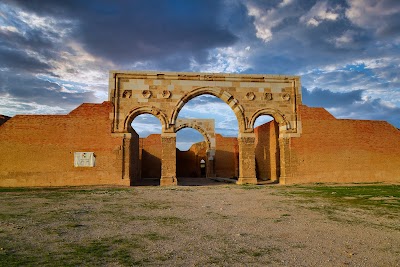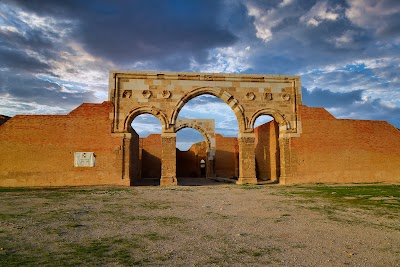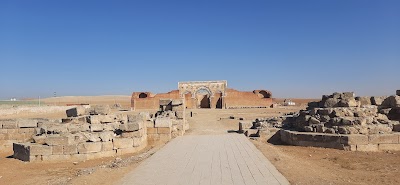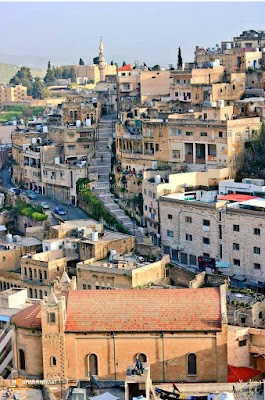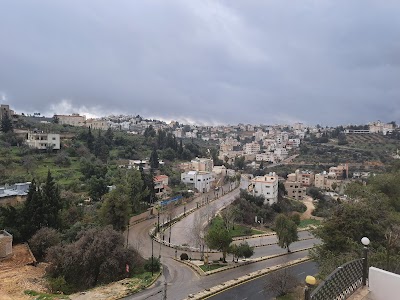Qasr Al-Mushatta (قصر المشتى)
Overview
Journey into the heart of Jordanian heritage with a visit to Qasr Al-Mushatta, an architectural gem nestled in the vibrant Governorate of Mafraq. Just a stone's throw from the modernity of Amman, this historical site offers a captivating glimpse into the Umayyad era, dating back to the mid-8th century. Constructed during the reign of Caliph Al-Walid II, Qasr Al-Mushatta stands as one of the largest and most impressive desert castles, sprawling across the ancient landscape of Jordan.
As you approach Qasr Al-Mushatta, the vast ruins instantly transport you to a bygone era of splendor and grandeur. The palace complex covers an extensive area, measuring approximately 144 meters on each side of its nearly perfect square layout. A formidable outer wall, fortified with semi-circular towers at regular intervals, hints at its original defensive and residential purposes. The grand entrance, adorned with ornate decorations and fine relief motifs, beckons visitors to delve deeper into its rich historical narrative.
Inside the palace, you can find remnants of what was once a magnificent courtyard, likely surrounded by grand reflecting pools and lush gardens. Imagining it in its prime, the palace must have been a marvel of desert architecture, beautifully harmonizing utility with aesthetics. The main hall, designed as the seat of royal audiences, stands out with intricate stucco carvings and decorative motifs. Perhaps the most striking elements are the ornamental designs that seamlessly blend Byzantine and Sassanian influences, showcasing the immaculate fusion of artistic traditions that define the Umayyad style.
A stroll through the ruins reveals the practical features of Qasr Al-Mushatta as a winter palace. Subterranean tunnels beneath the grounds provided plumbing for baths and sanitation — an advanced feature for its time. The eastern section of the palace housed a mosque alongside living quarters for the caliph and his retinue, complete with hypocaust heating systems that exemplify the ingenuity of its construction.
Beyond its architectural significance, Qasr Al-Mushatta tells a compelling story of its partial completion. Historical records suggest that construction halted abruptly after the assassination of Caliph Al-Walid II, leaving the palace unfinished. This incomplete state serves as an everlasting testament to both its potential glory and the turbulent nature of Umayyad rule. While much of the site remains in ruins, the intricate stonework from the façade was notably relocated to the Pergamon Museum in Berlin, where it continues to mesmerize visitors from around the world.
The scenic setting of Qasr Al-Mushatta in the arid Jordanian landscape adds another layer of awe to the experience. The desert environment accentuates the resilience and creativity of its builders, who achieved remarkable architectural prowess amidst harsh natural conditions. Whether you're a history aficionado, an architecture enthusiast, or simply a curious traveler, this site offers a peaceful retreat for reflection and exploration.
For a comfortable visit, be sure to bring plenty of water, as the desert conditions can be quite taxing, especially during the summer months. Wearing sturdy walking shoes is advisable due to the uneven terrain. Additionally, consider joining a guided tour to enhance your experience, providing deeper insights into the historical context and architectural nuances of this remarkable site.
In conclusion, Qasr Al-Mushatta is not merely a relic of Jordan's storied past but a celebration of human ambition and architectural excellence. The palace's unfinished state serves as a poignant reminder of the impermanence of power, while its preserved beauty continues to inspire admiration. Whether experienced on its own grounds or through its relocated artifacts in Berlin, Qasr Al-Mushatta captures the imagination and enriches the soul, making it a must-visit destination on any Jordanian itinerary.


